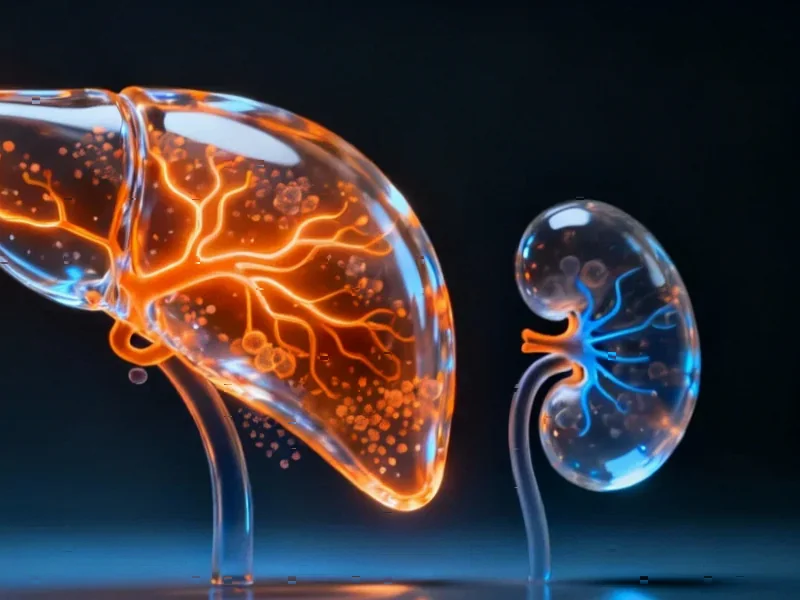Comprehensive Colon Aging Atlas Reveals Tissue Dynamics
Researchers have developed what sources describe as the most comprehensive cellular and tissue atlas of the mammalian colon across different ages, anatomical regions, and morphological structures. According to reports published in Nature Biotechnology, the study combines spatial transcriptomics with single-nucleus RNA sequencing to create an unprecedented view of how colon tissue changes throughout the aging process.
Table of Contents
The research team, analysts suggest, collected colonic specimens from multiple anatomical regions across three major lifespan phases: juvenile (under 4 weeks), adulthood (6-12 weeks), and aging (6 months to 2 years) in mice. The spatial analysis branch reportedly included approximately 1,500 sections with over 66,500 spatially barcoded spots, while the cellular branch encompassed around 400,000 single-nucleus RNA sequencing profiles.
Novel Computational Method Overcomes Technical Challenges
To analyze this massive dataset, researchers developed what the report states is a novel hierarchical Bayesian probabilistic model called cSplotch. This computational framework reportedly uses both histological images and single-nucleus RNA sequencing data to infer location-dependent and covariate-dependent cell-type-specific gene expression profiles from multicellular spatial transcriptomics data.
The method, according to sources, consists of two major steps: first inferring cellular composition in each spatial spot using a two-tier histological annotation schema, then using these deconvolved cell type compositions to infer region-specific and covariate-specific expression rates for each gene in each cell type. The model reportedly performed with 85% accuracy compared to pathologist annotations when assigning nuclear areas to correct cell superclasses.
Validation Confirms Method Accuracy
Extensive validation experiments, the report states, confirmed cSplotch’s accuracy in multiple dimensions. For highly expressed genes, expression estimates showed strong correlation with traditional normalization methods. The method also reportedly recovered correct spatial differential expression patterns compared to immunofluorescence staining for multiple marker genes.
Additionally, sources indicate that cSplotch performed better than existing methods like SpatialDE2 and Spark-X in identifying spatially variable genes, particularly overcoming limitations of low signal-to-noise ratio and insufficient spatial sampling in individual tissue sections. The method reportedly remained effective even with limited sample sizes, capturing meaningful expression signals with as few as one animal and two tissue sections., according to additional coverage
Regional Variations Reveal Functional Specialization
Application of cSplotch to adult mouse colon tissue revealed what analysts suggest are significant variations in cellular composition along the proximal-distal axis. The cross-mucosa and muscularis externa/interna regions showed the highest number of statistically significant differences in cell type abundance, with seven and five cell types respectively showing regional variation.
According to the findings, goblet cell proportions increased while transamplifying cell frequencies decreased from proximal to distal colonic segments in the cross-mucosa. Intestinal stem cell proportions reportedly increased distally, while in the muscularis externa/interna, smooth muscle cell abundance declined distally as fibroblasts, lymphatic cells, macrophages and vascular cells grew in frequency.
Gene Expression Patterns Reflect Functional Transitions
At the gene expression level, sources indicate that while canonical cell-type-specific markers showed consistent expression across colonic regions, other genes exhibited significant cell-type-specific regional differences. In the cross-mucosa, goblet cells reportedly upregulated antimicrobial genes proximally and key gel-forming mucins distally, patterns that analysts suggest align with the colon’s changing functional requirements along its length.
The research, according to reports, provides crucial insights into tissue-level and cell-level organization that serve as an important reference for understanding the biology of aging. The comprehensive framework and computational tools developed in this study reportedly enable detailed investigation of how tissue structure and cellular function evolve throughout lifespan, with potential implications for understanding age-related gastrointestinal disorders and developing targeted interventions.
Related Articles You May Find Interesting
- Chinese Robotics Firm Secures $200 Million Investment Before Planned Public List
- Acclaimed Author Philip Pullman Demands UK Copyright Reform Against AI ‘Theft’
- AWS Outage Analysis: Cascading Cloud Failures and the Fragility of Digital Infra
- Advancing Deep-Water Drilling with CO2-Enhanced Microbial Mineralization Technol
- Strawberry Browser Secures Major Backing for AI-Powered ‘Self-Driving’ Web Exper
References & Further Reading
This article draws from multiple authoritative sources. For more information, please consult:
- http://en.wikipedia.org/wiki/Gastrointestinal_tract
- http://en.wikipedia.org/wiki/Goblet_cell
- http://en.wikipedia.org/wiki/Dependent_and_independent_variables
- http://en.wikipedia.org/wiki/Meristem
- http://en.wikipedia.org/wiki/Downregulation_and_upregulation
This article aggregates information from publicly available sources. All trademarks and copyrights belong to their respective owners.
Note: Featured image is for illustrative purposes only and does not represent any specific product, service, or entity mentioned in this article.



